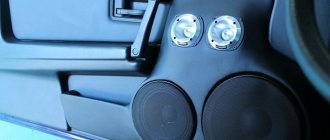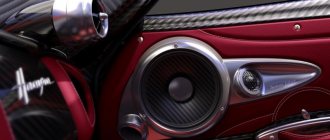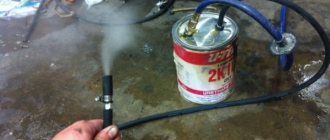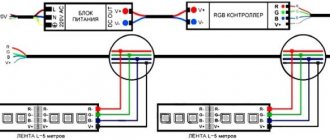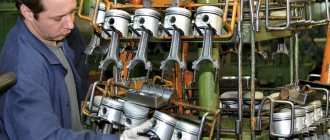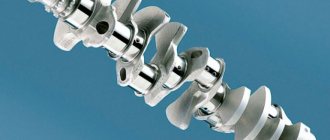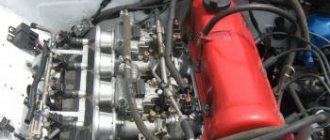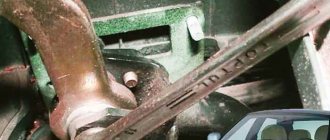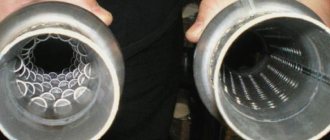The model of the Volga Automobile Plant VAZ 2110, produced from the second half of the 1990s to the end of the 2000s, gained wide popularity among motorists. The updated design and aerodynamic properties allowed it to quickly win the hearts of its fans.
During the production process, several engine options were installed on the car in order to improve dynamic characteristics. But no matter how good the car is, the time comes when it is necessary to overhaul the engine. The average cost of its implementation in Russia is from 12,000 to 20,000 rubles .
Overhaul of 8 and 16 valve VAZ 2110 engines
The tenth model was created with extensive use of components and assemblies of the previous model - 2108. At the beginning, the car was equipped with a 1.5-liter VAZ-21083 8-valve engine with a carburetor. At the next stage, a more powerful VAZ-2111 engine with the same volume and number of valves, equipped with a direct fuel injection system, was installed.
More than 1 million cars equipped with such an engine were sold in Russia. The VAZ-21114 power plant with its volume increased to 1.6 liters made it possible to increase power and reduce fuel consumption. Over time, a more dynamic 16-valve version of the 1.5 liter VAZ-21120 engine was developed, which turned out to be not entirely successful due to design errors.
On the next modification of the VAZ-21124 engine, the cubes were increased, which made it possible to increase the power to 100 hp. and show good performance. Finally, the sixth version of the VAZ 2110 car was equipped with an imported 2-liter, injection, 16-valve Opel X20XEV CTi engine, which allowed the car to accelerate to speeds of over 200 km/h.
The service life of engines installed on the VAZ 2110 model is on average about 250 thousand km . Since such cars have been traveling on the roads for a long time and many have not only overcome this milestone, but some have surpassed it, the question arises of carrying out a major overhaul of the power plant.
What is an engine overhaul? This is work aimed at restoring the performance of the engine and bringing the technical characteristics to factory specifications. Due to the variety of types of power plants installed on a car, major repairs for each specific vehicle may differ in the degree of complexity of the work and the range of necessary spare parts.
As with most cars, a thorough engine repair is not complete without dismantling it, completely disassembling it, cleaning it, and identifying inoperable parts and components.
The geometric parameters of the crankshaft and camshafts, the quality of the surfaces of the cylinders and cylinder head, and the condition of the valves are checked. Piston rings and liners are replaced, new gaskets, seals, fuel and oil filters, and spark plugs are installed. The assembled motor is returned to its place and run-in. Having finally adjusted the ignition and fuel supply systems, everything is ready to continue using the car.
Repair tool
We will need:
- universal set of sockets and keys;
- screwdrivers;
- torque wrench;
- piston ring clamp;
- crane for dismantling and mounting the motor;
- hammer.
From technical fluids and lubricants:
- motor oil 10w40 or 5w40 4 liters and 1 liter jar ($30);
- green or blue antifreeze 10 liters ($18);
- copper paste 1 tube ($5);
- Victor Reinz sealant ($5).
What determines the cost of overhauling a VAZ 2110 engine?
The cost of repair work depends on the following main factors:
- Models of the installed engine.
- The degree of wear of its components and parts.
- Number of spare parts to be replaced.
- Availability of additional work on repair of cylinder head, shafts, cylinders.
- Car mechanic qualifications and workshop equipment.
During the overhaul process, it may be necessary to replace or repair other engine-related components and assemblies, requiring additional financial costs.
Lubricating parts
Combined engine lubrication device for the VAZ-2109 (2110). Oil is supplied to the main and connecting rod bearings, as well as to the camshaft supports under pressure; the cylinders, pistons, pins and rings, camshaft cams and pushers are lubricated by splashing; all other associated parts are lubricated by gravity.
A gear-type oil pump with a bypass valve is installed at the front of the block. The oil receiver is mounted using bolts on the cover of the second main bearing and the pump housing. The oil filter is non-separable and has bypass and anti-drainage valves. The design of the lubrication system and other engine systems is discussed in detail in separate articles.
Crankcase ventilation is forced, gases are removed through the oil separator.
The main stages of overhauling the VAZ 2110 engine
The process of restoring the performance characteristics of the power plant takes place in several stages:
- Dismantling of the internal combustion engine, complete disassembly, washing of parts.
- Inspection of rubbing surfaces and abutment planes, identification of damage.
- Control of the geometry of the crankshaft and camshafts.
- Determination of replacement parts.
- Processing of crankshaft journals, cylinders, coating.
- Elimination of geometric defects of shafts.
- Refurbishment of cylinder head.
- Complete with new liners, piston rings, gaskets, seals.
- Assembly and return of the engine to the car.
- Replacement of filters, connection of all systems.
- Run-in and final adjustment.
The need for additional work may become clear during the repair process. So sometimes there may be a need to repair the fuel or oil pump, clean the carburetor, and in the case of injection, repair the injection system.
Repair process
To begin with, we remove the engine from the beam and begin to disassemble it, simultaneously carrying out troubleshooting of the parts. We send the head and bare block for milling and assembly of the cylinder head. When the parts arrive, we begin assembling the block.
Before installing pistons and connecting rods, they need to be weighed. The difference in weight, in tolerances, should not exceed 3 grams. If the difference is normal, use a piston ring clamp and gently tap with a hammer to press the pistons into the block. After this, we attach the connecting rods to the crankshaft using the journals. During installation of the pistons, the cylinders should be lubricated with oil, as well as the places under the liners. This is required so that in a short period, when the pressure in the system is insufficient, there is no increased friction of parts. We need copper grease to lubricate the connecting rod cap bolts!
Next, we install the oil pump, and pour a little oil into the oil receiver, after which we place the pan on the gasket and sealant.
How much does it cost to overhaul a VAZ 2110?
Depending on the type of engine, the estimated cost of removing/installing an 8-valve engine is from 3,000 rubles , and a 16-valve engine is from 4,000 rubles . The approximate cost of cylinder head repair, excluding the cost of parts, is from 3,500 rubles and from 5,500 rubles , respectively. On average, boring a cylinder block will cost from 1,200 rubles. Replacing sleeves will cost from 2500 rubles .
The average cost of a major overhaul of a VAZ 2110 engine equipped with 8 valves will be from 12,000 rubles . Repairing an engine with 16 valves will cost from 19,000 rubles .
Block head
We complete the finished head with a camshaft and a split gear. We set the camshaft to the overlap and tighten the star nuts well so that the camshaft phases do not “walk”. The camshaft bed is also well lubricated with oil. After installing the cylinder head gasket, we seat the head and use a torque wrench to properly tighten the head. After installation, we adjust the initial valve clearance. This procedure should be repeated on a warm engine. Now you can install attachments and place the motor on the beam. Before mounting the manifold to the cylinder head, check the evenness of their plane and place it on the sealant. Lubricate the manifold mounting studs with copper grease.
After installing the engine, we put the ignition kit in its place, and set everything to 1 mark, where the piston of the first cylinder is at TDC. We connect everything necessary and fill in the liquids. It is important that before screwing in the oil filter, it must be filled with oil.
Next, we start the engine, first of all we expel the air from the cooling system, and top it up if necessary. Then, with the engine warm, we check the oil level and adjust the valves.
After 1000 km, it is recommended to change the oil and re-press the head and check the connections. Run-in, as a rule, provided that the rings are of high quality, occurs at the first start. A full break-in will require no more than 1000 km. At this stage, the motor shows maximum power and torque. 85 horsepower can be achieved with high-quality repairs. If there is a need to increase power, then you can install a camshaft with a wider phase, a direct-flow exhaust system and a carburetor with increased capacity. As a result, you are guaranteed an honest 100 “horses” and a good resource. Do not forget that the compression ratio of the engine is increased, so fill only with 95-grade gasoline, which will allow you to use all the engine power and achieve minimal fuel consumption.
Specifications
VAZ 2114 car
The technical characteristics of the VAZ 2114 engine are quite typical for the 2113-2115 series of cars. In addition, this power unit is developed on the basis of the “eight” engine, which has declared itself to be reliable and easy to repair. The car was produced from 2001 to 2013. During this period, the vehicle received five valuable power units.
VAZ 2114 engine structure
As was said earlier, the 2114 was equipped with five different power units, which differed in power and valve mechanism. Three of them had 8 valves, and the other two had 16. The gas distribution mechanism had a belt drive. Until 2007, the engine was equipped with a simple on-board computer, which did not regulate the operation of the engine based on sensor readings. Therefore, the motorist had to regulate the processes the old fashioned way, manually. Since 2007, an ECU was installed, which, receiving data from sensors, independently adjusted many processes.
Design features of the engine.
Since the second generation had a so-called two-way electronic engine control unit, it is worth considering what electrical circuit was installed.
Electrical diagram of a VAZ 2114 car.
Main characteristics of the motor
All engines that were installed on the vehicle had approximately the same characteristics and design features. So, the motor is easy to service and repair with your own hands. Let's look at the main technical characteristics of the VAZ 2114 engine:
Features of the 2111 (1.5i) engine power system
Location of elements of the 2111 (1.5i) engine power supply system in the engine compartment:
1 - receiver; 2 — vacuum supply hose to the fuel pressure regulator; 3 — throttle assembly; 4 - fuel rail; 5 — fuel pressure regulator; 6 — air supply hose to the throttle valve; 7 - adsorber; 8 — air filter; 9, 10 and 11 — hoses of the crankcase ventilation system; 12 — throttle valve drive cable; 13 — diagnostic fitting
Read more: Resistances for 12V LED
combined with the fuel level indicator sensor into a single unit - fuel module
(often called an electric fuel pump). The pressure pump delivers fuel from the tank through the fuel filter to the fuel rail.
Engine Fuel Module 2111 (1.5i):
1 — fuel level indicator sensor; 2 — connecting block; 3 — inlet pipe; 4 - outlet (discharge) pipe; 5 — module cover; 6 — module cover guide; 7 - electric fuel pump in a plastic casing; 8 - intake chamber
Fuel rail for engine 2111 (1.5i) complete with injectors:
1 — diagnostic fitting; 2 - fuel rail; 3 — fuel supply tube to the fuel rail; 4 — fuel pressure regulator; 5 — tube for draining (draining) fuel into the tank; 6, 7, 8 and 9 - injectors
Fuel pressure control
installed on the fuel rail. Excess fuel is returned to the tank through the fuel return line.
Engine power supply system diagram 2111 (1.5i):
1 - nozzle; 2 - fuel rail; 3 — diagnostic fitting; 4 - adsorber; 5 - check valve; 6 — throttle assembly; 7 - gravity valve; 8 — safety (two-way) valve; 9 - separator; 10 - filler pipe; 11 — fuel filter; 12 — fuel drain line; 13 — fuel line hose connecting the outlet pipe of the fuel module to the fuel filter; 14 — fuel module; 15 — fuel tank; 16 — fuel line connecting the fuel filter to the fuel rail; 17 - fuel pressure regulator
Problem areas in the engine
During the operation of this vehicle, owners discover malfunctions and weak points of the engine. These include the following:
- Water pump. This element is also called a liquid pump. It breaks quite often. If the vehicle owner did not look at the temperature sensor readings in time, then a breakdown of the liquid pump can lead to serious consequences. This installation quickly overheats, and then it simply jams. To restore the functionality of the part, you will have to sharpen the cylinders and then change the piston group.
- Radiator. It is imperative to check the radiator periodically. Quite often, a leak forms in places where there are adhesions. They must be eliminated as quickly as possible.
- Roller in the gas distribution mechanism. This is another weak point where breakdowns can occur. If you hear a hum in the area under the timing belt cover while the engine is running, then you must take all necessary measures. If the hum begins to interfere only when the trip is long, then the functionality of the roller can be restored by using more lubricant. However, this will not save you for a long time, so major repairs will be required. The roller will have to be replaced. If you continue to ignore unpleasant sounds, then in the future this will lead to the fact that the load on the timing belt increases significantly. As a result, he either breaks through or flies out of his place. As a result, the valves bend, so a complete overhaul of the entire unit is necessary.
Quite often, Priora drivers complain that oil is leaking under the cover of the valve mechanism. To fix this problem, you just need to replace the gaskets.
As a rule, repair work consists of boring the cylinders or simply replacing the pistons. Often, owners are forced to resort to repairs because the unit has overheated. This happens due to the following reasons: the cooling system is not working well or is completely broken, the gaskets are not installed tightly, the thermostat is not functioning properly, etc. In simple cases, you can simply change the gasket. But if overheating is caused by more complex and serious problems, then you will not be able to correct the situation on your own, so you will need the help of specialists.
What do we pay attention to after engine repair?
Once you pick up your vehicle after engine repair, you need to check the following:
- is there a fuel or coolant leak;
- does the oil pressure level correspond to the declared value;
- is there any oil leakage between the main connecting nodes;
- Is the ignition timing optimal?
- When the engine is idling, what is the crankshaft speed reading?
It is also necessary to pay attention to checking those systems that are associated with the engine. This also includes the tightness of the carburetor, the presence of characteristic tapping sounds under the hood, etc.
Without completely disassembling the engine, it is difficult to determine which manufacturer parts and materials were used for repairs. What is written on paper sometimes does not correspond to reality. This can only be revealed after operating the vehicle. If after a trial test drive no problems or malfunctions were found, then you can safely begin operating the vehicle. Just remember that it is strongly not recommended to load a newly repaired engine. During this period of time, the loads that are typical for the first drive of a newly purchased car are relevant.
High-quality engine repair. What is the price?
“Low prices for engine repairs” - such phrases are quite often found in advertisements at auto repair shops in the city. Don't let the desire to save money on engine repairs prevail over your logical choice! Before making a final decision on joint cooperation, you need to collect information about the quality of the workshop services provided. Customer reviews and information in open sources will allow you to form your own opinion.
Only well-equipped workshops that have all the necessary equipment, machinery and tools can perform high-quality engine repairs. Highly qualified specialists bear full responsibility for the quality of the work performed. The cost of repairs depends on many factors. Only after inspecting the failed unit can we talk about specific numbers. By contacting our center, you receive a unique offer. When repairing an engine, complete engine diagnostics are free! Use the services of specialists, and you will not have to waste your time checking the quality of the engine repair performed.
Why does a car engine start to sputter?
Engines tend to wear out, however, it is not always possible to determine exactly what caused accelerated wear or serious problems. On the other hand, there are several traditional problems due to which your engine may require urgent engine overhaul.
The first reason can be called neglect to change the oil and check the oil filter. The problem is extremely common, since not everyone pays the due amount of attention to this issue. Meanwhile, especially if the mileage is high, engine oil begins to quickly lose its properties, negatively affecting not only the actual operation of the engine, but also damaging its individual systems.
The use of cheap or low-quality engine oil can also speed up engine overhaul. Even if you have an old VAZ, you should still understand that you cannot use bad mixtures, oils and liquids - this will damage the car, shortening its service life.
As for VAZ cars, literally anything can affect the operation of the engine
It is especially important to monitor the parking location and operating conditions of the vehicle. By leaving your car overnight in an undesignated place, which is characterized by a sharp temperature change or high humidity, you risk finding yourself on the verge of a major engine overhaul very quickly.
So, for example, starting a frozen car at twenty degrees below zero, the effect on the engine is as if you had just driven two hundred kilometers at maximum speed.
If you do not take care of the air and fuel filters, do not fundamentally change them, or replace them with cheap low-quality models, then a large amount of abrasives gets into the engine. This means that engine problems are most likely associated with bad filters.
In the end, we must not forget that a car that is constantly used in city traffic wears out faster and requires major engine repairs than a vehicle that moves mainly on the highway. And here, interestingly, it doesn’t matter at all whether we are talking about domestic cars or expensive foreign cars.
